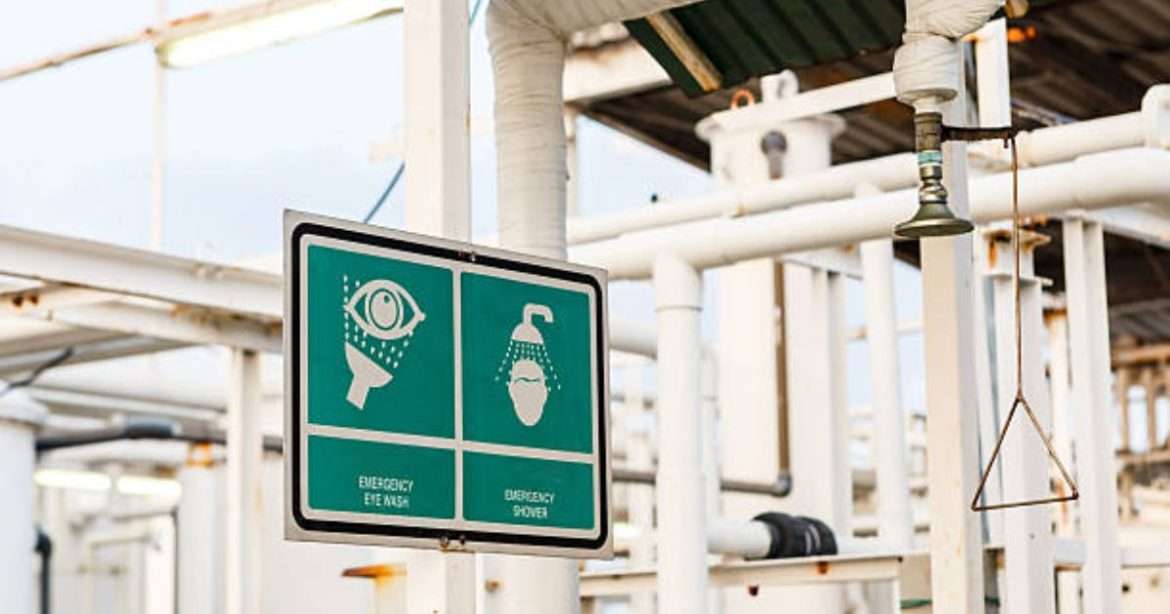Table of Contents
Introduction
Plumbed eyewash stations are one of the essential safety devices in the realm of workplace safety. Particularly in areas with hazardous materials present, eye injuries can happen quickly and without warning. To provide prompt eye irrigation in the case of an eye injury or exposure to potentially dangerous substances, plumbed eyewash stations are essential safety devices. We’ll go into great detail on the purpose, specifications, value, best practices, and upkeep of eyewashes in this tutorial.
Understanding the role of plumbed eyewash stations
For workplace safety, plumbed eyewash stations are fundamental. These safety devices deliver quick relief for eye injuries and chemical exposures while averting additional damage. To provide personnel with quick access, stations are strategically located in workplaces that handle hazardous products.
In an emergency, its quick activation enables a steady, controlled spray of tepid water to effectively wash pollutants from the face and eyes. This immediate action is essential because eye injuries can become more serious very rapidly and, if untreated, might result in blindness or vision loss. Stations with plumbing allow for a steady, controlled flow of water to quickly wash away pollutants from the face and eyes.
Eye injuries can range from minor irritations to severe and potentially vision-threatening incidents. The rapid and thorough irrigation offered by the stations is essential in reducing the severity of eye injuries. These stations help avoid further injury and improve the chances of a full recovery by swiftly eliminating irritants or toxins.
Plumbed eyewash stations reduce the degree of eye injuries by offering a dependable method of eye irrigation, protecting the wellbeing of workers. These stations must be present and kept in good working order in order to satisfy safety requirements and standards, highlighting their significance in workplace safety practices. To foster a safer work environment and show their dedication to employee welfare, employers must place a high priority on knowing the function of eyewash stations that are piped in.

Requirements for plumbed eyewash stations
To ensure the effectiveness and compliance of plumbed eyewash stations, several requirements must be met:
Proper location – Plumbed eyewash stations should be placed in important areas of the office to allow for quick and easy access. They have to be situated around 55 feet, or a 10-second walk away from any eye-hazardous situations.
Correct placement – The eyewash nozzles should be positioned at eye level for the user to enable cozy and effective eye irrigation. Throughout the process, the user’s eyes should be positioned within the water flow.
Tepid water supply – Eyewash stations with plumbing must be linked to a steady supply of water that is tepid (between 60°F and 100°F, or 16°C and 38°C). When performing irrigation, tepid water reduces thermal shock to the eyes.
Compliance with regulations – Regulations and standards for occupational safety frequently call for the installation of emergency showers, including plumbed units. In order to adhere to regulatory standards and promote employee safety, employers must make sure that their eyewash stations are compliant with these guidelines.
The importance of plumbed eyewash stations
Complying with safety regulations regarding plumbed eyewash stations is not just a legal requirement; it’s an ethical responsibility. Failure to provide proper eye safety measures can lead to legal consequences and, more importantly, put the well-being of employees at risk.
In the event of an eye injury or exposure to hazardous materials, time is of the essence. Eyewash stations provide immediate access to eye irrigation, which can be the difference between a minor incident and a severe injury. Their presence instills confidence in employees that their workplace prioritizes safety.

Maintenance of plumbed eyewash stations
Proper routine inspections are required to check for any visible damage, leaks, or obstructions that might stop the flow of water. Test the eyewash station to make sure the water is flowing normally and clearly. Maintain a testing activity record for compliance and safety reasons.
Cleaning and decontamination are important factors to keep the eyewash station and its components clean and free from contaminants to increase their regulations. Clean the basin and nozzles frequently to guarantee high-quality water. Employees should receive proper instructions on how to utilize the eyewash station. Make sure they are aware of the location of the station and what it does.
Ensuring a consistent supply of tepid water within the preferred temperature range is also vital. Comprehensive record-keeping of maintenance activities serves as documentation of compliance and safety measures.
Additionally, employee training on proper usage and maintenance fosters a culture of safety, enhancing the reliability of these crucial safety devices.
Our conclusion
Plumbed eyewash stations are indispensable safety devices that protect employees’ vision and well-being in workplaces where eye injuries or exposure to hazardous materials are a potential risk. Their rapid response capability, controlled water flow, and hands free operation make them vital tools in minimizing eye damage. By adhering to guidelines for installation and maintenance, employers create a safer work environment, reduce the risk of eye injuries, and demonstrate their commitment to employee safety.
